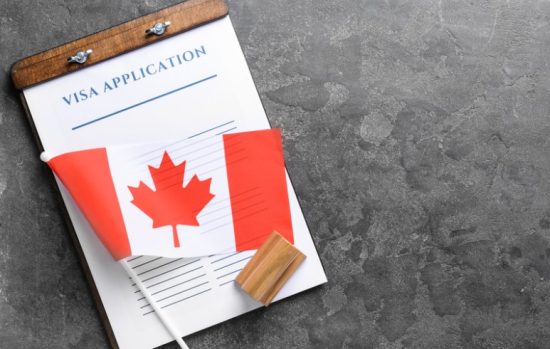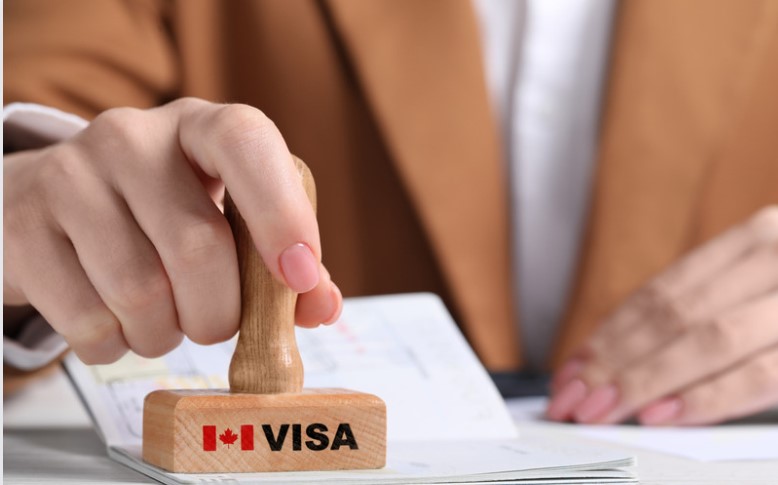Are you dreaming of visiting the breathtaking landscapes of Canada? Planning a business trip or wanting to spend quality time with your loved ones in the Great White North? Well, you’ll need a Temporary Resident Visa (TRV) – an official document that opens the doors to this beautiful country. But hold on, getting a TRV is not as easy as packing your bags and hopping on a plane! Don’t worry though, because in this blog post, we’ll guide you through the process step by step. From types of visas to eligibility criteria and application procedures, we’ve got all the information you need to make your Canadian dream come true. So grab a cup of coffee and let’s dive into how to obtain a Temporary Resident Visa in Canada!
Temporary Resident Visa

A Temporary Resident Visa (TRV) is like a golden ticket that grants you access to the wonders of Canada. It’s an official document, carefully placed in your passport by a visa office, signalling that you’ve met all the requirements for entry into this magnificent country as a temporary resident. However, it’s important to note that holding a TRV doesn’t guarantee automatic entry into Canada. The admission of foreign nationals as temporary residents is viewed as a privilege rather than an inherent right.
To obtain a TRV, you must go through a thorough application process and demonstrate your eligibility for temporary residency in Canada. This involves proving that your visit will be temporary and providing supporting documents such as valid identification, financial proof, and travel itineraries. The Canadian government wants to ensure that visitors are genuine tourists or businesspeople who will eventually return home after their stay.
Types of Temporary Resident Visa
There are several types of Temporary Resident Visas for Canada, each categorized based on the purpose of the visit.
- Visitor visa: This is the most common type of TRV and allows you to visit Canada for tourism, business, or medical reasons. The maximum duration of stay for a visitor visa is 6 months.
- Student visa: This type of TRV allows you to study in Canada at a designated learning institution (DLI). The maximum duration of stay for a student visa is 2 years, but it can be renewed for up to 4 years.
- Work permit: This type of TRV allows you to work in Canada for a specific employer. The maximum duration of stay for a work permit depends on the type of work you are doing.
- Super visa: This type of TRV allows the parents or grandparents of Canadian citizens or permanent residents to stay in Canada for up to 2 years at a time.
- Business visa: This type of TRV allows you to come to Canada to conduct business activities, such as attending meetings, negotiating contracts, or setting up a business.
- Diplomatic visa: This type of TRV is issued to diplomats and their families who are coming to Canada to work at a foreign embassy or consulate.
These various types of Temporary Resident Visas cater to different needs and purposes when visiting Canada temporarily.
Eligibility Criteria for the Temporary Resident Visa

To be eligible for a Temporary Resident Visa (TRV) in Canada, there are several criteria that you must fulfil.
- You need to be at least 18 years old to apply as the primary visa applicant. Additionally, you must have a valid government-issued passport with at least one blank page that is not the last page of your passport.
- If any of your documents are in a language other than English or French, you will need to translate and certify them. It’s also important to have a clean criminal history and submit court documents as proof.
- Financially, you should be prepared to pay the necessary visa application fees and processing fees. You’ll also need to sign and date relevant documents where required, including filling out a Visa Application Center (VAC) Consent Form.
- In terms of immigration status, copies of your current status in another country or Canada should be submitted along with your application. Sufficient funds are crucial as well – make sure you can cover your stay in Canada.
Be ready for an interview or provide biometric information if requested by the Canadian Consulate. If asked by the consulate, undergo a medical examination too.
What Are the Requirements for the TRV Canada?
There are two types of requirements that applicants must fulfil to qualify for a Temporary Resident Visa (TRV) in Canada: General Visa Requirements and Visa Specific Requirements.
The General Visa Requirements apply to all TRVs, regardless of the purpose of your visit. These include submitting forms such as Form IMM 5257 (Application for Temporary Resident) and Form IMM 5707 (Family Information). Depending on your situation, you may also need to fill out additional forms like Form IMM 5409 (Statutory Declaration of Common-law Union), Form IMM 5476 (Use of a Representative), or Form IMM 5475 (Authority to release personal information).
In addition to the general requirements, there are specific criteria based on the purpose of your visit. For example, if you’re applying for a Tourist Visa, you’ll need an itinerary detailing the places you plan to visit in Canada. If it’s a Super Visa for parents or grandparents, an invitation letter from your child or grandchild and proof of relationship will be required.
For Business Visas, you must provide evidence that you work for a company other than the one you’re doing business within Canada. Diplomatic Visas require documentation proving your status as a governmental official visiting Canada for official duties.
It’s crucial to carefully review the specific visa requirements outlined in our guide and ensure that you meet them all. Failing to meet any requirement may result in rejection unless additional proof is submitted.
How to Apply for a Temporary Resident Visa?

Applying for a Temporary Resident Visa (TRV) in Canada involves following a specific set of steps.
To apply for a temporary resident visa (TRV) in Canada, you can follow these steps:
- Check the requirements: Before you start your application, you need to check the requirements for a TRV in Canada. You can find these requirements on the website of the Canadian government.
- Gather the required documents: Once you have checked the requirements, you need to gather the required documents. The required documents vary depending on your nationality and the purpose of your visit. However, some common documents include:
-
- A completed application form
- A recent photograph
- Proof of travel health insurance
- Proof of financial support
- Proof of ties to your home country
- Pay the application fee: The application fee for a TRV is CAD$100. You can pay the fee online or by mail.
- Submit your application: You can submit your application online or at a visa office in your home country.
If you are applying online, you can do so through the IRCC website. You will need to create an account and then submit your application form and supporting documents.
If you are applying at a visa office, you will need to bring your application form and supporting documents to the visa office. You will also need to pay the application fee in person.
The processing time for a TRV application varies depending on the visa office and the time of year. However, it typically takes 3-6 months to process an application.
You can track the status of your application online through the IRCC website. If your TRV application is approved, you will be issued a visa sticker that you will need to affix to your passport.
If your TRV application is refused, you will receive a letter explaining the reasons for the refusal. You can appeal the decision within 30 days of the refusal letter.
Alternatively, In-person applicants should pay fees at the Consulate and hand over their passport to the designated consular officer.
How Much is Canada’s Temporary Visa Fee?

One of the important factors to consider when applying for a Temporary Resident Visa in Canada is the visa fee. The cost of a Canadian temporary visa varies depending on the type of visa you are applying for and your country of residence. It’s essential to know how much you need to budget for this process.
The fee for a single-entry visitor visa is CAD$100, while a multiple-entry visitor visa costs CAD$150. If you are applying for a Super Visa, which allows parents or grandparents to visit their children or grandchildren in Canada, the fee is CAD$100 as well.
For business visas and other specialized categories like diplomatic and official visas, courtesy visas, facilitation visas, organ donor visas, and dual intent visas, the fees may vary based on specific requirements.
It’s crucial to note that these fees are subject to change at any time without notice. Therefore, it’s advisable to check the official Government of Canada website or consult with an immigration professional before submitting your application.
How Long is a Temporary Resident Visa for Canada?
The duration of a Temporary Resident Visa (TRV) for Canada depends on the specific circumstances and purpose of your visit. Generally, TRVs are granted for a short duration, typically six months or less. These visas are designed to accommodate temporary stays in Canada, whether it be for tourism, business meetings, family visits, or other purposes.
For tourists exploring the breathtaking landscapes of Canada or individuals attending conferences and trade shows, a TRV allows them to enjoy their stay for up to six months. This provides ample time to experience all that Canada has to offer.
Business travellers can also benefit from a TRV as they attend important meetings and engage in various business activities within the country. The visa ensures they have sufficient time to conduct their affairs before returning home.
Conclusion
Obtaining a Temporary Resident Visa in Canada requires careful preparation and adherence to the specific requirements for each type of visa. Whether you are planning a tourist trip, visiting family members, or conducting business, it is essential to understand the eligibility criteria and gather all necessary documents.
Remember that applying for any visa requires attention to detail and accuracy throughout the entire process. If you have any doubts or need assistance with your application, consider consulting with immigration experts who can provide guidance based on their knowledge and experience.
By following these steps and meeting all requirements diligently, you increase your chances of obtaining a Temporary Resident Visa in Canada successfully! Start preparing today for an exciting journey ahead.
FAQs – How to Obtain a Temporary Resident Visa in Canada?
1. What does Canada temporary resident visa mean?
An official counterfoil document known as a temporary resident visa (TRV) is placed in a person’s passport to demonstrate that they have fulfilled the requirements for admission to Canada as a temporary resident.
2. What is the benefit of temporary resident visa in Canada?
Applicants for the Temporary Resident Permit can temporarily enter Canada for a predetermined period. Depending on why a person needs access to Canada, the validity length of a temporary resident permit might range from one day to three years.
3. What is the difference between a visitor visa and a temporary resident visa in Canada?
A tourist visa permits you to enter Canada for a temporary stay of up to six months, but a temporary residency permit (TRP) enables you to enter Canada for a defined purpose and duration of time, up to a maximum of three years.
4. Can temporary residents apply for PR in Canada?
If all of the following conditions are met, holders of temporary resident permits (TRPs) may be qualified to apply for permanent residency as members of the permit holder class: They are still allowed under the same conditions for which the initial TRP was issued. They have an active TRP at the moment.











